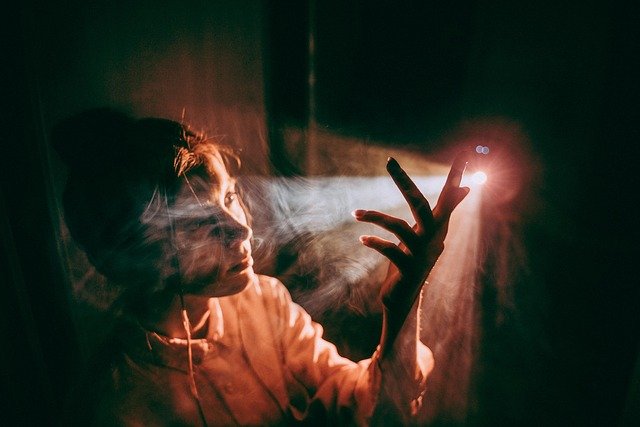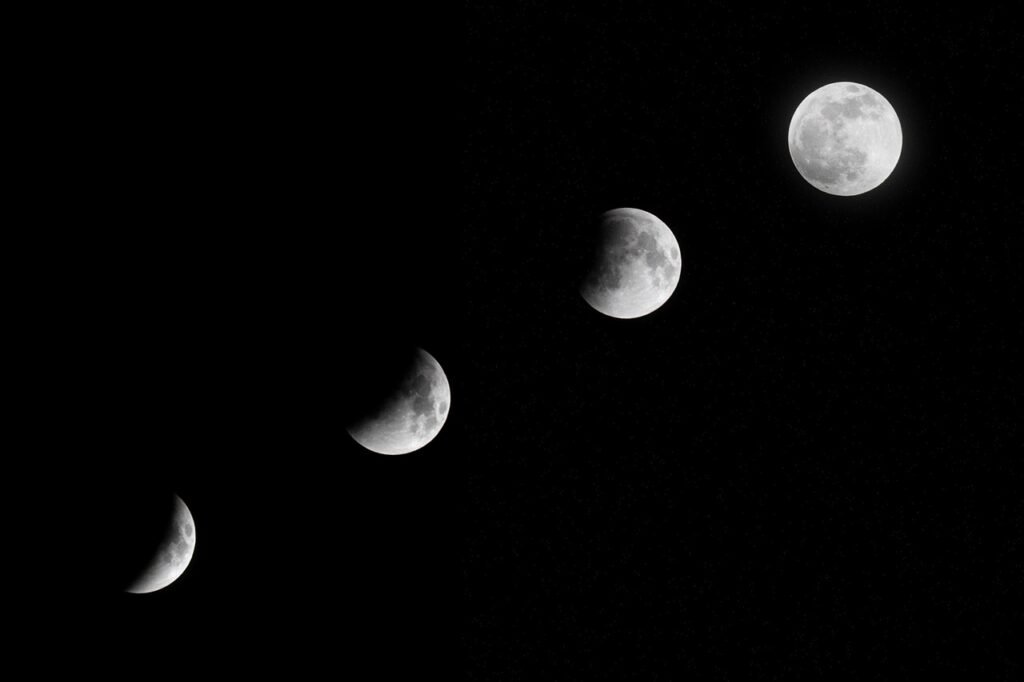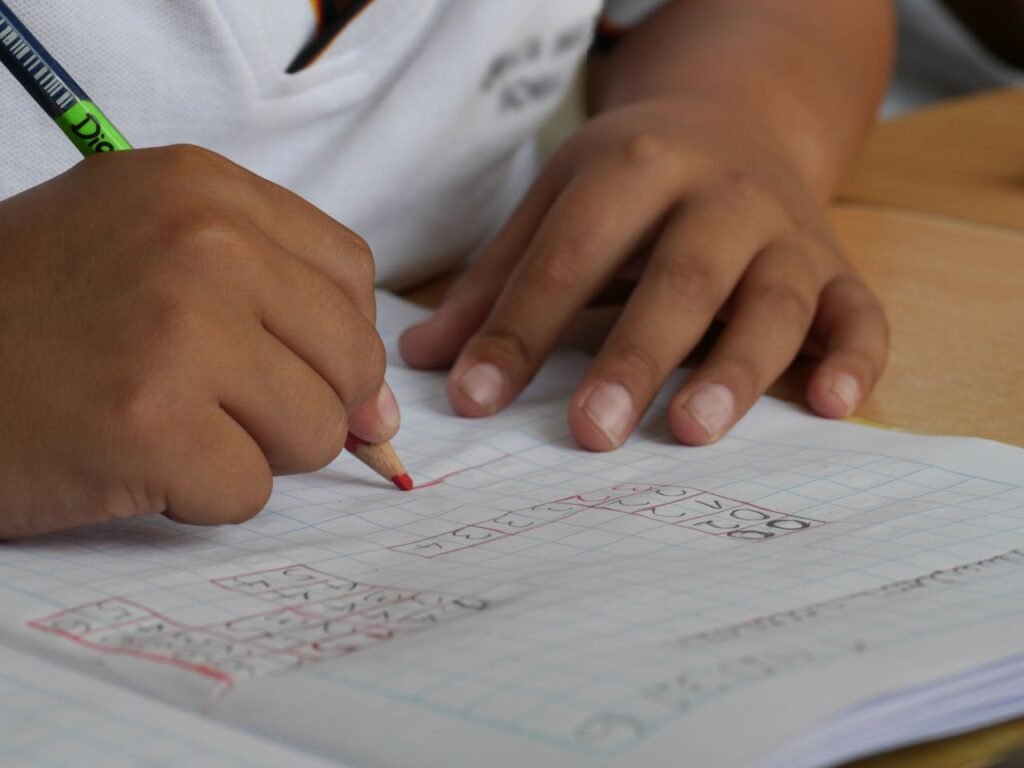Have you ever chased your own shadow on a sunny day, or tried to make shadow animals with your hands on a wall? Shadows might seem like simple, everyday things, but they are actually a fun and fascinating way to learn about light, angles, and shapes.
A shadow is more than just a dark patch on the ground. It can tell you where the Sun is, what time of day it is, and even help measure how tall something is without a ruler. The way a shadow changes in size and shape is not magic — it’s pure science.
In this article, we’ll explore what shadows are, how they’re made, why they change throughout the day, and how you can experiment with them at home. By the end, you’ll not only understand shadows — you’ll start noticing them everywhere and seeing them as tiny science lessons you can carry in your pocket.
What Is a Shadow?
A shadow is a dark area that appears when something blocks light. It’s not a thing you can touch — it’s actually the absence of light. Imagine sunlight streaming through your window in the morning. If you put your hand in front of the sunlight, the light can’t pass through your hand, so a shadow forms on the wall or floor behind it.
Light Travels in Straight Lines
To understand shadows, we first need to understand how light moves. Light doesn’t bend around corners easily. It travels in straight lines until it hits something. When light meets a transparent object (like clear glass), most of it passes through. When it meets a translucent object (like frosted glass or thin cloth), some light passes through but some is blocked, making a faint shadow. When it meets an opaque object (like wood, metal, or your body), no light passes through — and a clear shadow is formed.
The Three Parts of a Shadow
You might think a shadow is just one dark shape, but scientists break it down into three parts:
- Umbra – This is the darkest part of the shadow, where all the light is completely blocked.
- Penumbra – This is the lighter, softer part around the edges, where only part of the light is blocked.
- Antumbra – This happens in special cases, like during an eclipse, where you can see a bright ring of light around the object.
You can notice the umbra and penumbra easily if you hold a ball near a wall and shine a flashlight at it — the center of the shadow will be darker than the edges.
Why Shadows Have Shapes

The shape of a shadow depends on two things: the shape of the object and the angle of the light source. If you hold a round plate in front of the Sun, the shadow will be round. If you tilt it, the shadow becomes an oval. This is why your own shadow changes shape when you move your arms or lean sideways.
Shadows and the Size Trick
One of the most interesting things about shadows is that they can look bigger or smaller than the object itself. This depends on how far the object is from the light source.
- Close to the light: The shadow looks bigger and blurrier.
- Far from the light: The shadow looks smaller and sharper.
You can try this by holding your hand near a flashlight and slowly moving it away. You’ll see the shadow shrink and become more defined.
How Shadows Change During the Day
If you stand outside on a sunny day and watch your shadow, you’ll notice it doesn’t stay the same. In the morning, your shadow is long and points west. Around noon, it becomes short and hides close to your feet. In the afternoon, it grows long again but now points east.
Why does this happen? It’s because the Sun appears to move across the sky during the day. The Sun’s position changes the angle of the light, and the angle changes the length and direction of the shadow.
Morning Shadows
When the Sun is low in the sky (near the horizon), the light hits objects at a shallow angle. This makes shadows long. That’s why early in the morning, even small things can cast very tall shadows.
Noon Shadows
At midday, the Sun is high above you, so the light is almost directly overhead. This makes shadows short — sometimes so short that they are barely visible.
Afternoon Shadows
In the late afternoon, the Sun lowers again, but on the opposite side of the sky. The shadows grow longer once more, but now they point in the opposite direction from morning.
Why Shadows Move
Shadows move because the light source moves. On Earth, it’s the Sun’s apparent movement caused by the planet rotating. In reality, the Sun isn’t moving across the sky — Earth is spinning, which makes the Sun seem to rise in the east and set in the west.
You can try a simple experiment:
- Go outside on a sunny day.
- Place a stick in the ground and mark the tip of its shadow with a stone.
- Check every hour and mark the new position of the shadow’s tip.
By the end of the day, you’ll see that the shadow has moved in a smooth curve.
Shadows as Ancient Clocks
Long before digital watches or even mechanical clocks existed, people used shadows to measure time. The sundial is one of the oldest time-telling tools. It’s basically a stick (called a gnomon) fixed in the ground. As the Sun moves across the sky, the shadow of the gnomon moves around a flat surface marked with numbers or symbols.
In ancient Egypt, Greece, and China, sundials were important for keeping track of daily activities. Farmers used them to decide the best time for planting and harvesting, and religious leaders used them to mark prayer times.
Even today, some gardens and public parks have sundials — not because people need them, but because they are beautiful reminders of how humans learned to track time using nature.
How Angles Affect Shadows

The angle of light is one of the most important factors in how a shadow looks. A small change in where the light comes from can completely transform a shadow’s size, shape, and sharpness. This is true whether the light comes from the Sun, a lamp, or even a flashlight.
The High Angle – Short Shadows
When the light is directly above an object — like the Sun at midday — the shadow will be short and close to the base of the object. If you stand outside around noon, you might notice your shadow is almost hiding at your feet.
This happens because the light is hitting you from straight above, so there’s very little space for the shadow to stretch out.
The Low Angle – Long Shadows
When the light source is low — like the Sun in the early morning or late afternoon — the shadow becomes long. Even small objects can make shadows that stretch far across the ground.
You can test this by shining a flashlight at a toy car from table level — the shadow will grow much longer than the car itself.
Changing Shapes with Angles
Light angles don’t just change a shadow’s length — they can distort shapes, too. If you hold a round plate above your head under a high light, the shadow will be round. But tilt the plate toward a side light, and the shadow becomes an oval.
Artists and photographers use this trick to create dramatic effects. In nature, it’s why the same tree might cast very different-looking shadows at different times of day.
Sharpness and Blurriness
The angle can also affect how sharp or blurry a shadow is.
- When light is direct and focused (like a flashlight close to an object), the edges of the shadow are sharp.
- When light is spread out or coming from many angles (like on a cloudy day), shadows become soft and blurry.
This is because the more direct the angle, the less light can “sneak” around the object to soften the edges.
The Angle Experiment
Here’s an easy way to see all of this for yourself:
- Place a toy or object in the middle of a table.
- Shine a flashlight from directly above — notice the short shadow.
- Move the flashlight lower, so it shines from the side — watch the shadow stretch.
- Tilt the flashlight slightly and see how the shape changes.
By playing with angles, you’ll see exactly how light direction changes shadows in both fun and surprising ways.
Fun Shadow Experiments at Home

You don’t need a science lab to explore the magic of shadows — all you need is light, some objects, and your imagination. These activities are simple, safe, and perfect for curious kids to try with their parents or friends.
1. Shadow Size Race
Goal: See how the Sun’s angle changes your shadow’s size.
- Pick a sunny day and stand in the same spot in your yard or at a park.
- Ask someone to mark where your shadow ends with chalk or small stones.
- Check your shadow every hour and mark its new position.
- Compare — in the morning and afternoon, your shadow will be long; at noon, it will be short.
This activity teaches how Earth’s rotation changes the Sun’s position in the sky.
2. Hand Shadow Puppets
Goal: Learn how shadow shapes change with movement.
- Sit in front of a blank wall or hang up a plain sheet.
- Place a lamp or flashlight behind your hands.
- Make animals or objects with your fingers — a rabbit, a bird, a dog.
- Move your hands closer to the light to make the shadow bigger, or farther away to make it smaller.
This activity is great for creativity while showing how distance affects shadow size and clarity.
3. Shadow Mystery Game
Goal: Guess objects by their shadows.
- Place a bright light on a table in a dark room.
- Have one person place an object between the light and the wall.
- The rest of the group guesses what it is by only looking at the shadow.
- Try changing the angle to make the object look like something else!
This teaches how angles can distort a shadow’s shape.
4. Build Your Own Sundial
Goal: Tell time using shadows.
- Push a stick into the ground in a sunny spot.
- Mark the tip of the shadow every hour.
- Label the marks with the correct time.
After a few days, your sundial will tell the time just from the Sun’s shadow. This is how ancient people tracked hours before clocks.
5. Shadow Art
Goal: Combine science and creativity.
- On a sunny day, place toys or interesting objects on a sheet of paper outside.
- Trace their shadows with a pencil.
- Color them in and turn them into fun characters or scenes.
This activity shows how sunlight changes shapes while encouraging artistic expression.
Shadows and the Seasons
Shadows don’t just change during the day — they also change throughout the year. This is because Earth is tilted on its axis as it orbits the Sun.
- In summer: The Sun is higher in the sky at noon, so shadows are shorter.
- In winter: The Sun is lower in the sky at noon, so shadows are longer.
You can track this by marking your shadow at noon once a month in the same spot. Over a year, you’ll see it growing and shrinking like a slow-motion dance.
Ancient people also noticed these seasonal shadow patterns. They built monuments, like Stonehenge in England, that align with the Sun’s position on special days like the summer and winter solstice.
Shadows in Nature

Shadows aren’t just a human curiosity — they’re part of how the natural world works. Every day, animals, plants, and landscapes use shadows in ways that help them survive.
Shadows That Protect Life
If you’ve ever sat under a tree on a hot summer day, you know how refreshing shade can feel. That cool comfort is thanks to shadows blocking some of the Sun’s heat.
In nature, this cooling effect can be the difference between life and death. Desert animals like lizards, snakes, and foxes often spend the hottest part of the day resting in shadowed spots under rocks or bushes. These shady areas keep their bodies from overheating.
Even in the ocean, shadows play a role. Coral reefs and underwater plants create shaded spaces where smaller fish can rest and stay cool in warmer waters.
Shadows for Hiding and Hunting
Shadows can be both a hiding place and a hunting tool.
- For hiding: A rabbit might hide in the shadow of a bush to avoid being seen by a hawk flying above. In water, fish will often stay in the shadow of a rock or pier to stay out of sight from predators.
- For hunting: Some birds of prey use shadows to their advantage. They perch in shaded areas so that prey animals can’t see them clearly until it’s too late.
Shadows as Silent Clues
Sometimes, shadows reveal things you can’t see directly. A soaring eagle might be hard to spot against a bright sky, but its moving shadow on the ground can give it away instantly. Hikers and farmers often read the land by watching shadows — noticing how trees, hills, and fences cast patterns that shift with the Sun
Shadows and the Environment
Shadows don’t just affect people and animals — they shape entire ecosystems. Areas that are shaded for most of the day stay cooler and often hold more moisture. This can change which plants grow there.
- In forests, tall trees create a shadowed “understory” where plants that prefer less light can thrive.
- In mountains, north-facing slopes stay in shadow longer, making them cooler and greener than sunlit slopes.
This means shadows are like invisible architects, quietly deciding which plants and animals live where.
Shadows in Space

Shadows aren’t just an Earth thing — they exist in space too, and they can be huge. During a solar eclipse, the Moon’s shadow falls on Earth. This shadow can stretch hundreds of kilometers and move faster than 1,600 kilometers per hour. People standing in the middle of this shadow see the Sun completely covered for a few minutes.
Astronauts on the Moon saw their own long shadows stretching across the surface because the Sun was so low on the horizon. These space shadows help scientists understand how light works in places with no atmosphere
Shadow Illusions and Tricks
Sometimes shadows can trick our eyes. Because shadows change shape depending on the angle of light, they can make objects look bigger, smaller, or even like a completely different shape.
Magicians and artists use this to create amazing visual effects. A shadow might look like a dragon, but the object casting it could be a pile of random items. This is why shadow art installations in museums are so popular — they combine science, creativity, and surprise.
Measuring with Shadows
You can measure things without a ruler using just shadows. For example, to measure the height of a tree:
- Measure the length of its shadow.
- Measure the length of your own shadow.
- Compare ratios — if your shadow is half your height, the tree’s height is double the length of its shadow.
This simple method has been used for centuries, and it’s a great hands-on math and science activity for kids.
Cultural Stories About Shadows
Many cultures have myths and stories about shadows. In some traditions, a shadow is believed to be connected to a person’s spirit. In other stories, shadows are playful creatures that come alive at night. These tales show that humans have always been fascinated by the way light and darkness interact.
How Debsie Makes Learning About Shadows Fun

At Debsie, we know that children learn best when they can see, touch, and play with the ideas they’re learning. Shadows might seem simple, but to a curious child, they can become a whole world of discovery — and we make sure they get to explore it in creative, meaningful ways.
We don’t just explain what shadows are. We help children experience them.
Turning Lessons Into Adventures
Instead of a teacher standing in front of a board talking about light, our partner educators guide kids through small challenges that make them feel like scientists and artists rolled into one.
- The Shadow Size Challenge: Kids step outside at three different times in a day, measure their shadow with a tape measure or string, and compare the results. This isn’t just fun — it’s a real experiment that teaches them about the Sun’s angle and Earth’s rotation.
- The Shadow Detective Game: Students go on a “shadow hunt,” finding unusual shadows around their home, yard, or neighborhood. They take pictures or draw what they see, then share with the class to guess what object made each shadow.
Mixing Science and Creativity
We believe that science doesn’t have to be dry or overly serious. That’s why we blend learning with creativity:
- Kids create shadow art by arranging toys or objects so their shadows form animals, landscapes, or story scenes.
- They learn to make hand shadow puppets, then write and perform short “shadow plays” for their families.
- Older students can design and test mini sundials that actually tell the time using the Sun’s position.
These activities let kids express themselves while understanding important concepts about light and angles.
Connecting to the Real World
Shadows aren’t just for play — they have been used for centuries to tell time, predict seasons, and even design buildings. Our lessons connect what kids see in their own backyard to these bigger ideas:
- How ancient civilizations used sundials.
- Why architects consider sunlight and shadow when designing houses and cities.
- How photographers and filmmakers use shadows to create mood and drama.
When kids understand that shadows are useful in real life, their respect for science deepens — it becomes something alive, not just a school subject.
Building Skills Beyond Science
Through Debsie’s shadow activities, children learn more than just light physics. They build:
- Observation skills by carefully noticing changes in shadow size, shape, and position.
- Creative thinking by experimenting with objects to see how their shadows change.
- Problem-solving skills when designing sundials or guessing unknown objects from their shadows.
- Confidence because they’re not just listening — they’re discovering answers themselves.
By the time a Debsie student finishes our shadow lessons, they’ve not only learned the science behind shadows but also developed curiosity, patience, and a love for exploring the world around them.
Conclusion
Shadows are more than just dark shapes that follow us around — they are tiny science lessons happening all the time. They show us how light moves, how angles work, and how our world changes with the Sun’s position. From the way they stretch in the morning to how they almost disappear at noon, shadows are a reminder that science is everywhere, waiting for us to notice.
When kids learn to explore shadows, they’re not just learning about light. They’re building skills that will serve them for life — curiosity, observation, problem-solving, and creativity. Whether it’s measuring a shadow to tell the time, making shadow puppets, or spotting shadows in nature, each activity helps them connect what they see with how the world works.
At Debsie, we turn this curiosity into confidence. Our partner teachers don’t just explain science; they make it come alive through hands-on projects, real-world connections, and guided exploration. Kids don’t just hear about concepts like light and angles — they play with them, test them, and see them in action. This makes learning not only easy to understand but exciting to experience.
🌞 Your child’s journey into the wonders of science can start today. Sign up for a free trial class at Debsie.com and watch them light up with curiosity, excitement, and a love for discovery — because the world is full of shadows, and each one has a story to tell.
Read next:



